Professor Shin Dong Kim, one of the long time colleagues and a rare academic in South Korea, has been steadfast in internationalising the landscape of Korean Communication Studies since early 2000s. He was one of the architects of a unique international conference organised by the Korean Association of Broadcasting and Telecommunication Studies (KABS), a vibrant association of academics and professionals. The association had its Spring 2016 conference in the culturally important city, Jeonju during April 22-23 2016.
The conference venue was in Chonbuk National University. The university witnessed historic student protests in the wake of the May 18 1980 uprisings against the then military dictatorship, according to Dr.Seong Hyoun Lee, Sejong Institute, Korea,who chaired the first session of the conference on April 22 2016.

A Modest Board of Chonbuk National University, Jeonju (Pl.do not compare this with our University arches!)
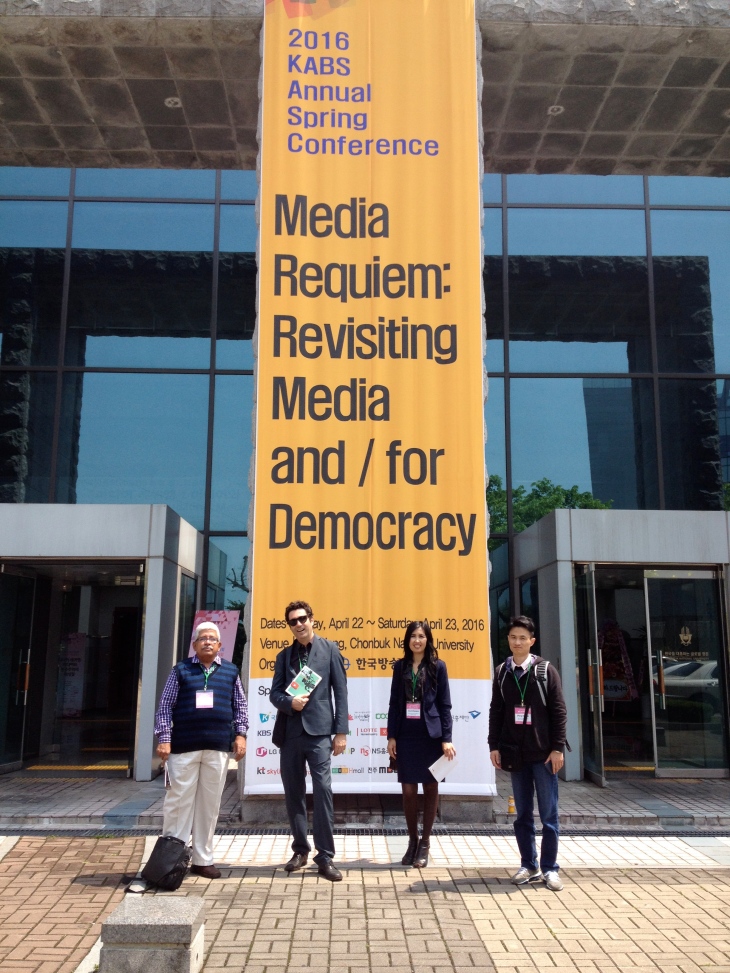
(L to R) Peng Huaxin, Elira Turdubaeva and Nello Barile

The registration corner/desk was different from the Western ones. There were typical Korean cultural motifs and the process was hassle free

Venue of the International Session. Spring 2016 KABS conference was the first one with International sessions
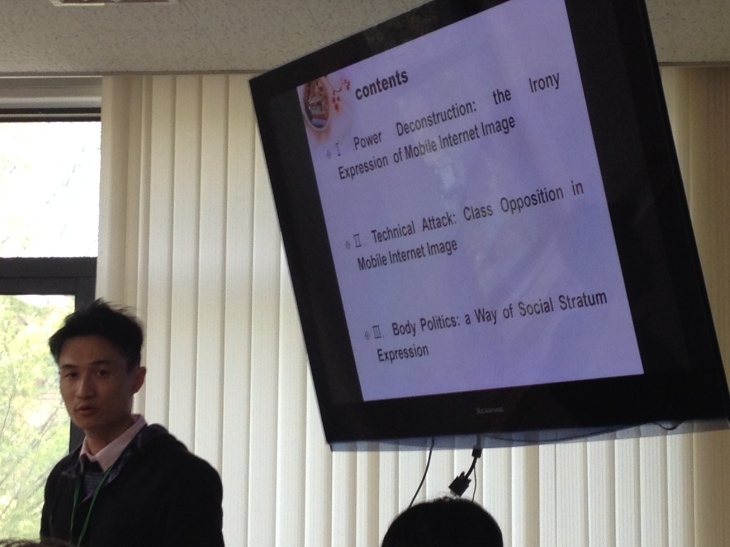
Peng Huaxin taking a critical dig at the Chinese Mobile Internet Images

As in many contemporary communication conferences, social media research was omnipresent
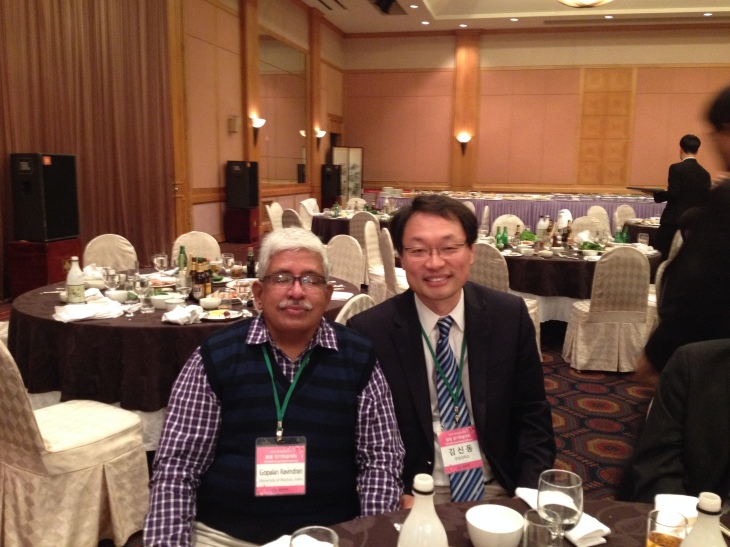
With Professor Shin during the conference dinner at Le Win Hotel, Jeonju, on April 22 2016
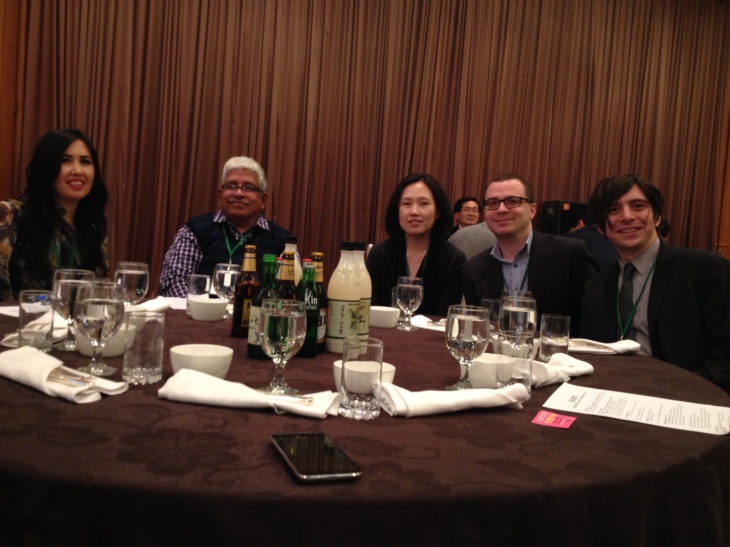
(L to R) Trace Cabot, Michael Prieler, Yeon Ju Oh and Elira Turdubaeva during the conference dinner at Le Win Hotel on April 22 2016
There were quite a number of enthusiastic young scholars from China, who had very forthright as well as predictable presentations. Notable among them was Mr Wang Shuo, a PhD scholar from Renmin University of China. He had a good presentation on the discursive practices of Chinese television talk shows with reference to “Mr Zhou Live Show.” Another interesting paper from China was presented by a young faculty member from the Shenzen University, Dr Peng Huaxin, who examined critically the relationship between mobile internet images and social expressions. He dealt with the aspects of body politic, power deconstruction and class struggles with reference to mobile internet images.
Dr Nello Barile, who teaches sociology of media at the ILUM University, Milan,Italy/Franklin University,Switzerland, made a substantive presentation linking semiotics and what he called as open branding of politicians. In his presentation, he was examining the case of the Italian Prime Minister, Matteo Renzi. I had a chance to read Nello’s review of Claudio Giunta’s book “Being Matteo Renzi” and the review helped me to appreciate the charismatic and suave Nello’s fascination for an equally charismatic young Prime Minister of Italy, Renzi. About the book, Nello says: “Giunta analyzes two essential ontological aspects of the Renzi phenomenon. The first is the idea that “things” and “facts” become increasingly evanescent, or evaporate altogether, under the spell of Renzi’s communicative skills (like Negroponte’s atoms transformed into bytes). The second is the plastic nature of the political leader’s identity, its ability to mold itself to the identities demanded by those whom some have called the ‘look at me generation”.(http://en.doppiozero.com/materiali/commenti/being-matteorenzi).
Dr Elira Turdubaeva, who chairs the Journalism and Mass Communication programme at the American University in Kyrgyztan, explored the dimensions of gatekeeping by the media in her country.
Dr Michael Prieler, Associate Professor, Hallym University, explored in a co-authored paper the images of elderly in 432 East Asian television advertisements in Japan, Korea and Hong Kong and pointed to their linkages with the legacy of Confucius.
Dr Trace Cabot’s (Research Associate, Hallym University) paper was complex to relate to even though it dealt with US primaries. He made a good case against the use of “pop esoterica” attempts by US media, which according to him are working against serious participation by lay people who can not relate to the expert knowledge systems deployed by the media.
There were a countless number of other interesting papers in the Korean sessions which I missed. The manifold attractions of Korean publications at the Registration counter stood testimony to that. Dr Nello took a copy as a souvenir and was flaunting it too!
I visited Hallym University, Chuncheon, one of the efficient private university systems in Asia and South Korea, to give a talk to Prof.Shin’s students on April 25,2016, after my return from Busan. The “Gaya Journey” (read below) was so enticing, I missed the temporal moorings and ended up missing the last Chuncheon bus at 7.10 pm. One kind Korean passenger, well versed with English, offered to help me out and asked me to take the last bus (8.00 pm) to Wonju, a nearby city. He advised me to explore the possibility of connecting from Wonju to Chuncheon after reaching Chuncheon. I took a chance, but the small city of Wonju was already in sleeping mode when my bus reached around 12.00 midnight. I looked around and asked for directions to a nearby motel. Another kind Korean, a taxi driver, asked me to look at the nearby building, which had the sign, MOTEL. I checked in and requested the person in the reception to message Prof.Shin that I reached Wonju and would take the morning bus to Chuncheon. Room fares in Korea are three to five times lower than Indian rates and three to five times clean as well. The bus journey from Wonju and Chuncheon provided good glimpses of the scenic beauty of South Korea as well as the rural environs. Prof.Shin came to the Chuncheon bus station to receive me and drove me to Hallym University around 12 noon.

The Lecturer’s multimedia console in the Communication Lecture Hall, Hallym University
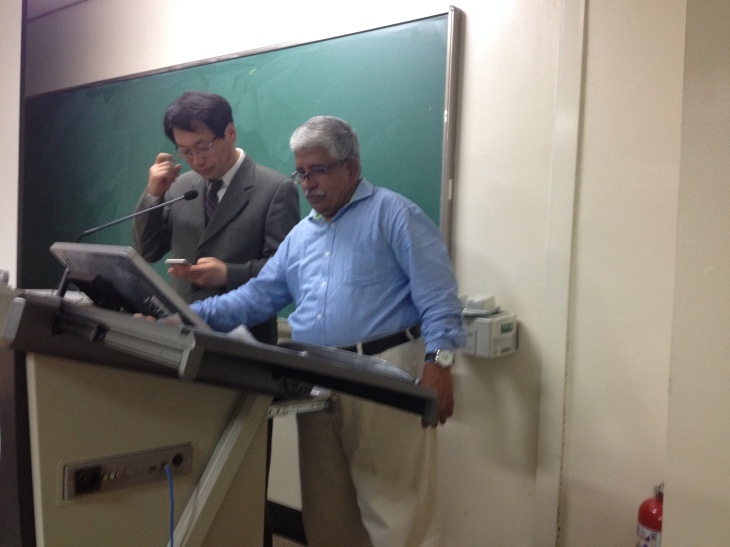
Trying to fix the video issue
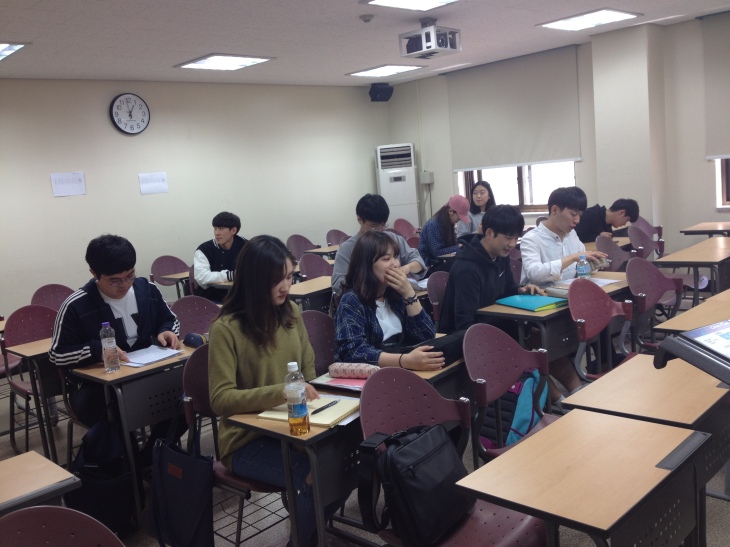
Communication Lecture Hall, Hallym University
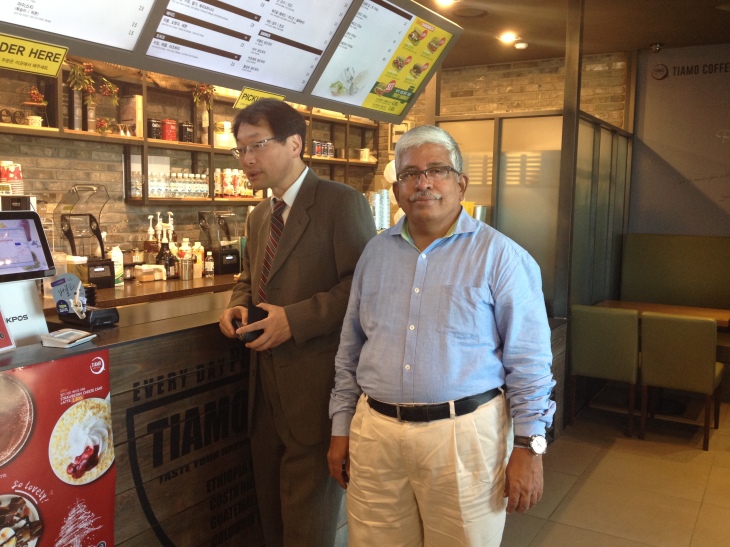
In the Hallym University Cafeteria
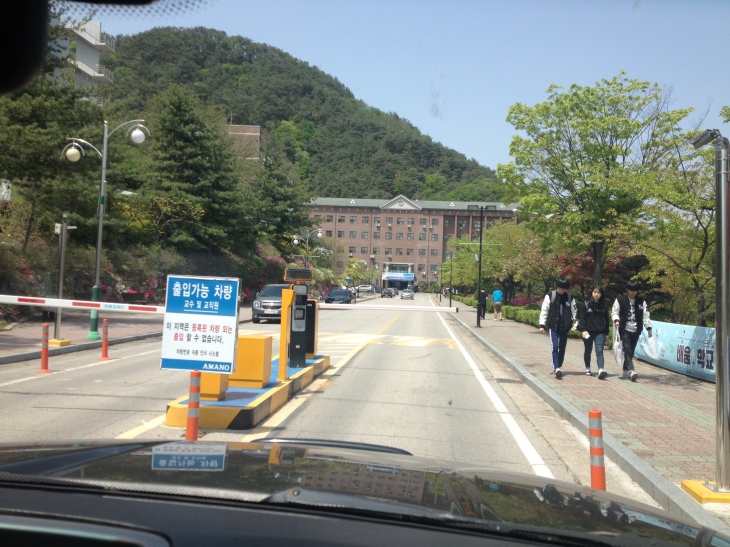
Entering Hallym University
During the stay, I had interesting conversations with Prof.Kim on his current research interest in studies on “mobility” in the new contexts provided by China. Prof.Shin Dong Kim caused one of the earliest waves of locally grounded mobile phone communication studies in Asia nearly a decade ago. I found it very interesting talking about “mobility” as a current denominator of the unprecedented scales/ formations of human beings in the birth and transformation of cities like Shenzen. As he was driving me to his University for a talk to his students, we engaged in a good conversation on travels as processes and travels as functional pursuits. He reminded me of the travelogue by Johann Goethe’s travelogue, “Italian Journey 1786-1788” and said it is an example of a traveller experiencing the process of travel instead of the purposeless travels we make in modern times between points of departure and arrival. I did experience travel as a process to connect with the incredible “mobilities” of our ancestors when I took off from Jeonju in a late afternoon bus to the second largest Korean city of Busan on April 23 2016 evening.
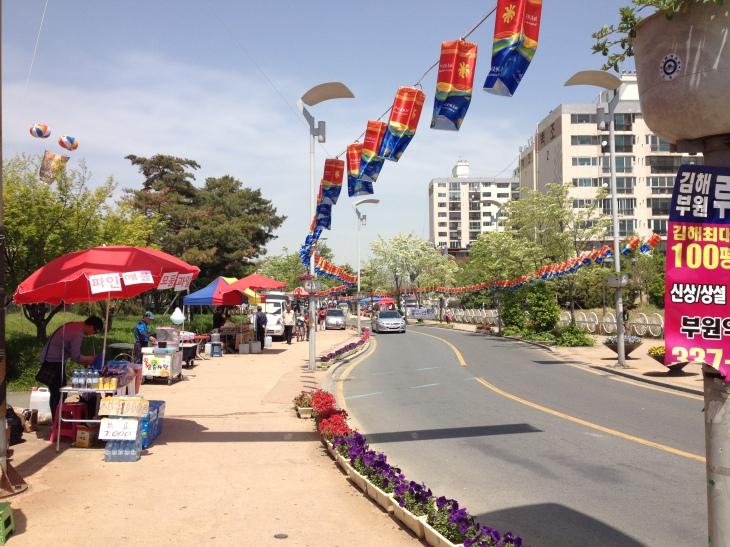
Gaya Festival, Gimhae, April 24 2016

Children calling their parents, “Amma, Appa” as they enjoy their kite flying on the mound which was the major excavation site related to Gaya history
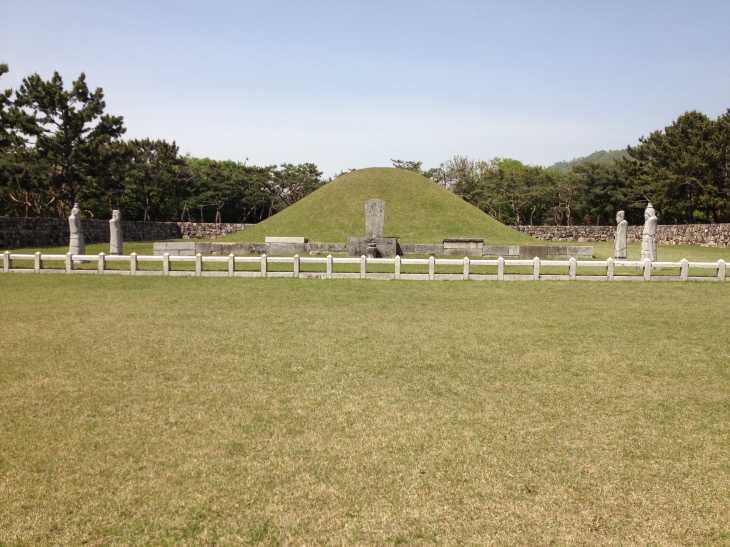
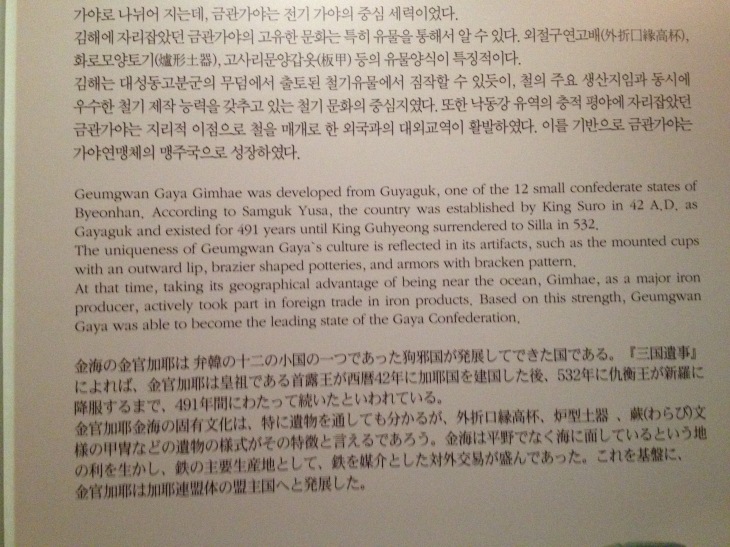
Geumgwan Gaya Gimhae’s history dates back to AD 42 when King Suro was making history
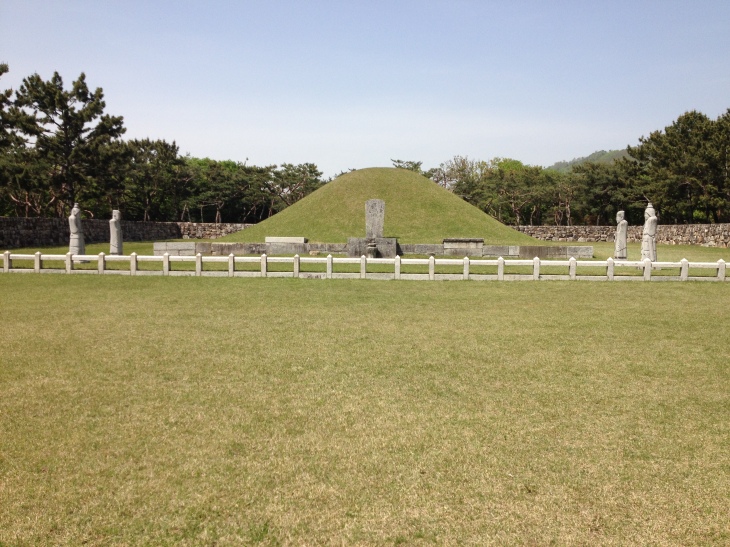

Plaque at the entrance of King Suro’s tomb
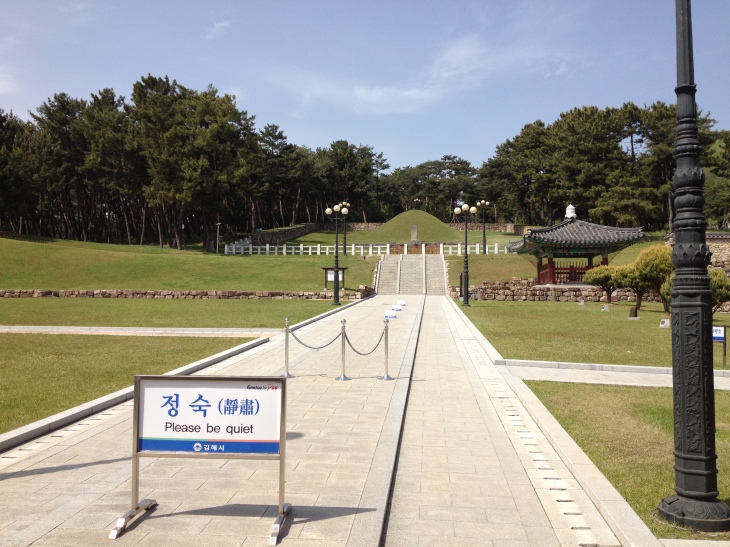
Queen Heo Hwang’s tomb

An elderly Korean praying at Queen Heo Hwang’s tomb
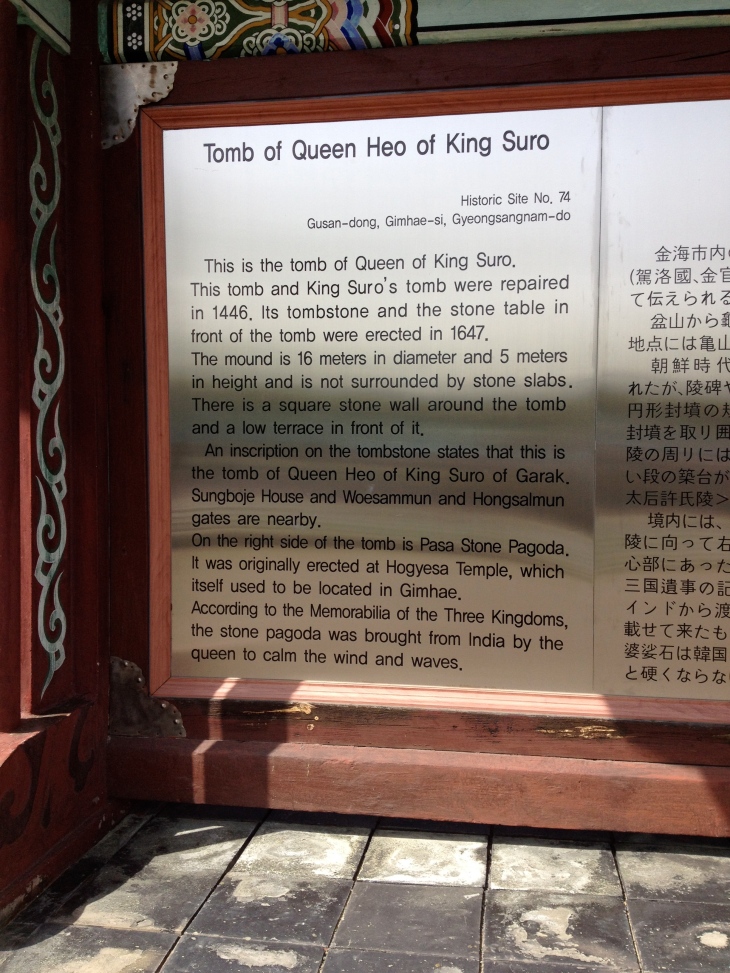
Plaque at the entrance to Queen Heo’s tomb
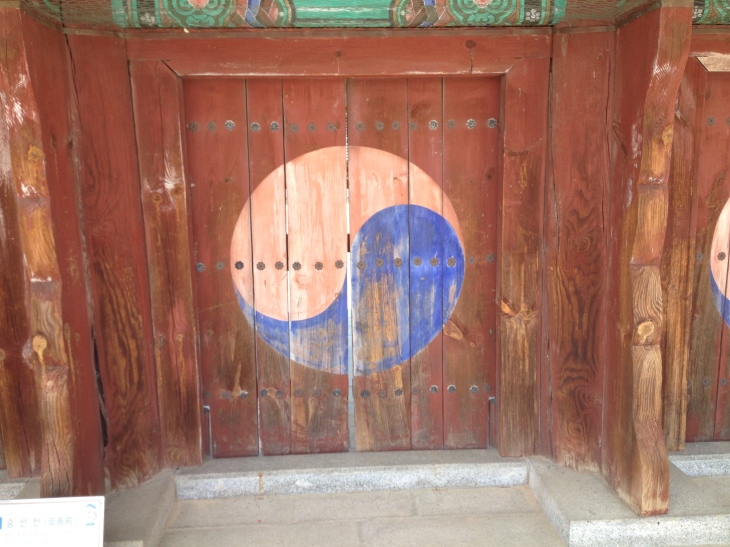
Yin/Yang symbol at the entrance door of King Suro’s tomb
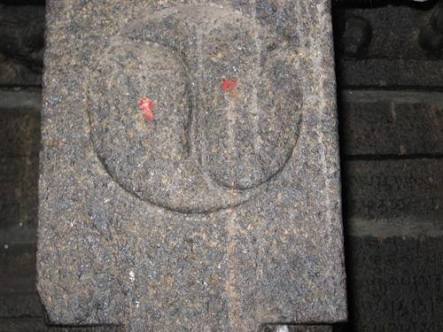
Yin/Yang motif from a Tamil Nadu temple pillar

Yin/Yang motif in South Korean Flag
Gaya flowers in Gaya are nothing but the flowers borne by our Kaya trees. There was a group of folk drummers in the festival grounds whose beats and movements reminded me of the drum beats of our students’ theatre group, Muttram. I found my way to the local museum which showcases the artefacts excavated from the region. I did not seek any help from locals and wanted to experience travel as a process as I was working with a local map to find my way to the tombs of King Suro and Queen Heo of the ancient Gaya kingdom. My travel was meant to be a process-centric experience and not tied to see Gaya’s historic sites as my points of arrival. I was trying to relate to the similarities in the words and cultural practices of Tamils and Koreans and trying to look at them from the perspective of ancient travellers from Tamil Nadu and Korea and the “cultural mobilities”they caused to themselves and the people they met and traded with.

Homer Hulbert’s 1905 book “Comparative Grammar of the Korean Language and the Dravidian Languages of India”
I read Homer Hulbert’s 1905 book “Comparative Grammar of Korean and Dravidian” recently, thanks to Orissa Balu, who managed to get a copy from USA. Many in North India, the Indian diplomats who get posted in South Korea, who wish to connect with the “ancient mobilities” between India and Korea through the marker of “Ayuta” as “Ayodhya” have probably not read this seminal work. In his preface, he acknowledges his debt to another wizard of 19th century’s fascination with comparative grammar, Robert Caldwell. The last major work on the lexical connection between Tamil and Korean was a paper by Morgan Clipphinger in the journal, Korean Studies,vol.8.1984. After “presenting over four hundred Korean Dravidian cognate pairs”, Clipphinger (1984,pp.1-3) says emphatically that “any connection between Dravidian and Korean must be closely tied to the migration of the peoples of Asia, a subject that is still not clearly understood. …In short, the evidence suggests that at a very ancient period, Dravidian and Korean shared a common heritage, and this heritage was reinforced much later by migrations to the Korean peninsula, perhaps in the later years of the first millennium B.C.”
Following Hulbert and Clippinger, Jung Nam Kim (President of the Korean Society of Tamil Studies) presented an interesting paper in the Classical Tamil Conference, Coimbatore, in 2010 entitled “Similarities between Tamil and Korean Languages.” Here is his interview https://www.youtube.com/watch?v=eGSrEAW0c_A. The lexical evidence that points to the connection between Korean and Dravidian/Tamil could not have started its journey from Hindi heartland, to say the least. From the concrete lexical evidence available, Queen Heo Hwang-Ok can also be read as a significant evidence of “ancient mobilities” between Tamil Nadu and Korea and the most likely source of the more than 400 pairs of cognates that point to the similarities between Korean and Tamil.
Hello sir, it was so interesting to travel through your article which made me travel South Korea inspite of being in home. Your minute observations taught me so many interesting points about South Korea. Hope you travel more and share more such articles to enhance our knowledge and exposure..
Hello sir, it was so interesting to travel through your article which made me travel South Korea inspite of being in home. Your minute observations taught me so many interesting points about South Korea. Hope you travel more and share more such articles to enhance our knowledge and exposure..